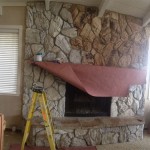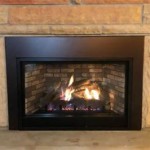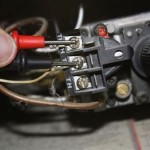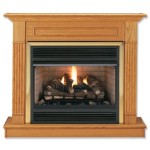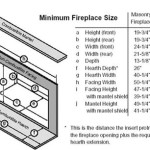```html
Mounting a TV Above a Fireplace: Considerations and Best Practices
Mounting a television above a fireplace has become a popular design choice in many homes, offering a centralized entertainment area. However, this configuration presents unique challenges and requires careful consideration to ensure both aesthetic appeal and the long-term health of the television and the surrounding structure. This article explores the key factors to evaluate before proceeding with this type of installation, addressing potential problems and providing guidance on best practices.
Heat Exposure and Television Lifespan
One of the primary concerns with mounting a TV above a fireplace is the potential for heat damage. While modern televisions are designed to withstand a range of temperatures, prolonged exposure to excessive heat can significantly reduce their lifespan and negatively impact performance. Heat rises, and the area above a fireplace can experience considerable temperature increases when the fireplace is in use. This heat can damage sensitive electronic components within the television, leading to issues such as screen discoloration, pixel degradation, and premature failure.
The severity of the heat exposure depends on several factors, including the type of fireplace (wood-burning, gas, or electric), the frequency and duration of use, and the presence of a mantel or other heat-deflecting barriers. Wood-burning fireplaces tend to generate the most intense heat, while gas and electric fireplaces generally produce less. However, even with these alternatives, precautions are necessary to minimize heat exposure.
To mitigate the risk of heat damage, several strategies can be employed. The first is to measure the temperature above the fireplace while it is in operation. This can be done using a thermometer or temperature sensor placed in the intended location of the television. If the temperature consistently exceeds the manufacturer's recommended operating temperature range for the television, alternative mounting locations should be considered. If mounting above the fireplace is still desired, consider incorporating features such as a deeper mantel or a heat shield to deflect heat away from the television.
Another approach involves using a full-motion TV mount that allows the television to be pulled away from the wall when the fireplace is in use. This creates a greater distance between the television and the heat source, reducing the temperature to which it is exposed. Regular monitoring of the television's performance is also recommended, looking for any signs of heat-related damage, such as screen discoloration or flickering.
Viewing Angle and Ergonomics
Beyond the potential for heat damage, the viewing angle is another critical factor to consider when mounting a TV above a fireplace. Mounting the television too high can lead to neck strain and discomfort, particularly during extended viewing sessions. This is because the natural resting position of the eyes is slightly downward, and repeatedly looking upwards can cause muscle fatigue and pain.
The ideal viewing angle is generally considered to be at eye level or slightly below. To determine the optimal mounting height, measure the height of the viewers' eyes when seated in their typical viewing positions. The center of the television screen should ideally be at or slightly below this height. If mounting above the fireplace necessitates a higher position, consider tilting the television downwards using a tilting TV mount. This can help to improve the viewing angle and reduce neck strain.
The size of the television also plays a role in determining the optimal viewing distance. Larger televisions require a greater viewing distance to avoid eye strain and ensure a comfortable viewing experience. Consult online resources and television manufacturer recommendations to determine the appropriate viewing distance for the specific television model.
Furniture arrangement can also impact viewing ergonomics. Ensure that the seating is positioned at an appropriate distance from the television and that the viewing angle is comfortable. Avoid placing furniture too close to the television, as this can create a cramped and uncomfortable viewing experience. A room design software can help visualize different furniture arrangements and viewing angles before committing to a specific layout.
Installation Challenges and Structural Considerations
Mounting a television above a fireplace presents unique installation challenges related to wall construction and structural integrity. Fireplaces are often surrounded by brick, stone, or concrete, which can make it difficult to securely attach a TV mount. Furthermore, the area above a fireplace may contain a chimney, which can further complicate the installation process.
Before beginning the installation, it is essential to thoroughly assess the wall construction and identify any potential obstacles. Determine the type of wall material (e.g., drywall, brick, stone, concrete) and locate any studs or support structures. If mounting to brick, stone, or concrete, specialized drill bits and anchors will be required. It is also important to ensure that the wall is strong enough to support the weight of the television and the mount. Consult with a structural engineer if you have any concerns about the wall's load-bearing capacity.
When running cables to the television, consider concealing them within the wall to create a clean and aesthetically pleasing appearance. This typically involves drilling holes in the wall and using cable management solutions to route the cables behind the drywall. However, be cautious when drilling near a fireplace, as there may be hidden wiring or plumbing pipes. If you are not comfortable working with electrical wiring or plumbing, it is best to hire a qualified professional.
Consider the future accessibility of the cables and the television. Choose a TV mount that allows for easy access to the back of the television for cable management and maintenance. Also, determine how you will access the space behind the television if it ever needs to be removed or repaired. This may involve installing an access panel in the wall or using a full-motion TV mount that allows the television to be easily pulled away from the wall.
Proper planning and execution are crucial for a successful TV-above-fireplace installation. If unsure about any aspect of the installation process, it is always best to consult with a qualified professional to ensure that the television is mounted safely and securely and that all relevant building codes are followed. Neglecting structural and safety considerations can lead to property damage and personal injury. Furthermore, incorrect installations may void warranties on both the television and the mounting hardware.
Consider the long-term implications of this mounting decision. Trends change, and technology evolves. Mounting a TV above a fireplace permanently alters the architectural appeal of the room and may limit future design options. Be sure to carefully weigh the aesthetic advantages against the potential practical and long-term drawbacks before committing to this type of installation. Furthermore, consider the potential impact on the resale value of the home, as this configuration may not appeal to all potential buyers.
```
Can I Mount My Tv Above The Fireplace

Can I Mount My Tv Above The Fireplace

Putting A Tv Above The Fireplace May Not Be Such Bad Idea After All

Safely Mount A Tv Above An Electric Fireplace Touchstone Home S Inc

Ortal S Innovative Technology Makes It Safe To Mount A Tv Above Your Fireplace

How To Mount A Tv Over Fireplace Vertical Chimney Care

ᑕ❶ᑐ What To Consider Before Mounting A Tv Above Fireplace

Mounting A Tv Above The Fireplace Mantelmount

Is It Safe To Mount Your Tv Above The Fireplace Chimney And Wildlife

Should You Mount Your Tv Above A Fireplace Digital Trends
Related Posts


